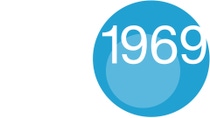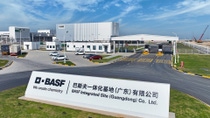Who we are
Our engagement in China
BASF has been conducting business in Asia Pacific for a long time. The success story began back in 1885 with the trade in textile dyes. Since then, our commitment has grown and diversified steadily. Today, BASF serves nearly all key industries across the region. With further investments in China, we are expanding our excellent position and accelerating BASF’s profitable growth in the world’s largest chemical market.
The Asia Pacific region is the main growth driver for the chemical industry and will continue to gain in importance. In 2000, the regions EMEA, North and South America, and Asia Pacific each accounted for about one-third of the global chemical market. By 2030, Asia Pacific will represent around 70 percent of the global chemical market.
Asia Pacific is the number one growth engine for the chemical industry. The resulting opportunities make the region highly attractive for BASF and its growing Asian footprint.”
BASF in China - a brief history
1885 - First delegate
BASF's activities in Greater China began in 1885, although it did not have its own production facilities. The trading company Jebsen & Co. secured the representation of the Badische Anilin- und Sodafabrik for Hong Kong and southern China and from then on sold BASF products, in particular textile dyes such as synthetic indigo. The partnership between BASF and Jebsen & Co. was to last for over 80 years and bring profit to both.

1969 - First own production in Greater China
As early as 1962, BASF declared a general interest in building production facilities in Greater China. The first investment was realized in 1969, when BASF founded a subsidiary in Taiwan. This entity bought into Cheng Kuang Chemical Co. Ltd. which operated a formulation factory for crop protection products in Taipei. The joint venture became the nucleus of BASF’s growth in Taiwan: In 1989, it was renamed BASF Taiwan Ltd.

1988 - First joint venture in Mainland China
In the 1980s the time had come for direct investment into production sites in Mainland China. In 1988, BASF founded its first joint venture in Mainland China: Shanghai Gaoqiao BASF Dispersions Co. Ltd., which as BASF’s longest-standing production facility in China makes styrene-butadiene dispersions for paper coating and carpets. Other joint ventures followed.

2005 - First Verbund site
In 2005, BASF inaugurated its first Verbund site in China, the Nanjing Verbund site - jointly run by BASF and China Petroleum & Chemical Corp. (Sinopec). The initial joint investment by both partners amounted to $2.9 billion. With key expansions in 2012, 2014, and 2023 the total investment amounts to $6 billion.

2006 - Further investments
Since 2006, BASF continuously increased production capacities at various sites. These include an integrated isocyanate production site at the Shanghai Chemical Industrial Park in Caojing. In order to serve the growing market in China, BASF constructed another large MDI plant in Chongqing, which started production in 2015.

2012 - First Innovation Campus
In 2012, BASF inaugurated the Innovation Campus Shanghai, located at the BASF Shanghai Pudong Innovation Park. Combining technical development capabilities with industrial design expertise, it serves the innovation demand of almost all major industries. The third expansion phase was inaugurated in 2023, with new laboratories for advanced materials and systems as well as for chemical engineering.

2019 - Second Verbund site
In 2019, BASF officially launched its smart Verbund project in Zhanjiang, Guangdong province, China, and commenced building its first plants. The total investment is ~€8.7 billion. Upon completion, it will be operated under the sole responsibility of BASF as the third-largest Verbund site after Ludwigshafen, Germany, and Antwerp, Belgium - and a role model of smart and sustainable production both in China and globally.

2021 - Foundation BASF Shanshan
In 2021, BASF and Shanshan have formed the joint venture “BASF Shanshan Battery Materials Co., Ltd.”. It focuses on the rapidly growing electric vehicle (EV) market, while continuously serving global consumer electronic and energy storage segments. It has sites in the provinces of Hunan and Ningxia.

2022 - First plant at Zhanjiang
In 2022, BASF inaugurated the first plant at the Zhanjiang Verbund site. It supplies engineering plastics compounds to customers, particularly in the automotive and electronics industries. With the next plant producing thermoplastic polyurethanes (TPU) to come on stream by 2023, the focus in Zhanjiang is to build the core of the Verbund, including a steamcracker along with downstream plants for the production of petrochemicals and intermediates, among others.

2023 - First wind farm
In 2023, BASF and Mingyang agreed to jointly construct and operate an offshore wind farm in South China with a total installed capacity of 500 megawatts. This is the first Sino-German offshore wind farm project involving development, construction and operation. The majority of the power generated will be used to supply the BASF Zhanjiang Verbund site.

2025 - First plant for recycled polyamide 6
In 2025, BASF announced the start-up of the world’s first commercial loopamid® plant. loopamid is a recycled polyamide 6 that is entirely based on textile waste. The production facility at the Caojing site in Shanghai, China, marks an important step in the supply of sustainable products for the textile industry.

A look at 130 years of BASF history in China (1885 - 2015)
To mark BASF's 150th anniversary, in 2015 the book "Breaking New Ground. The History of BASF in China from 1885 to Today" was published. In it, author Michael Grabicki, for many years (until 2012) head of Corporate Media Relations at BASF, traces 130 years of BASF's development in China.
Breaking New Ground. The History of BASF in China from 1885 to Today
Hardcover (2015): 382 pages
HOFFMANN UND CAMPE VERLAG
ISBN: 978-3-455-50363-0





